Increasing Building Safety With Fire Rated Panels
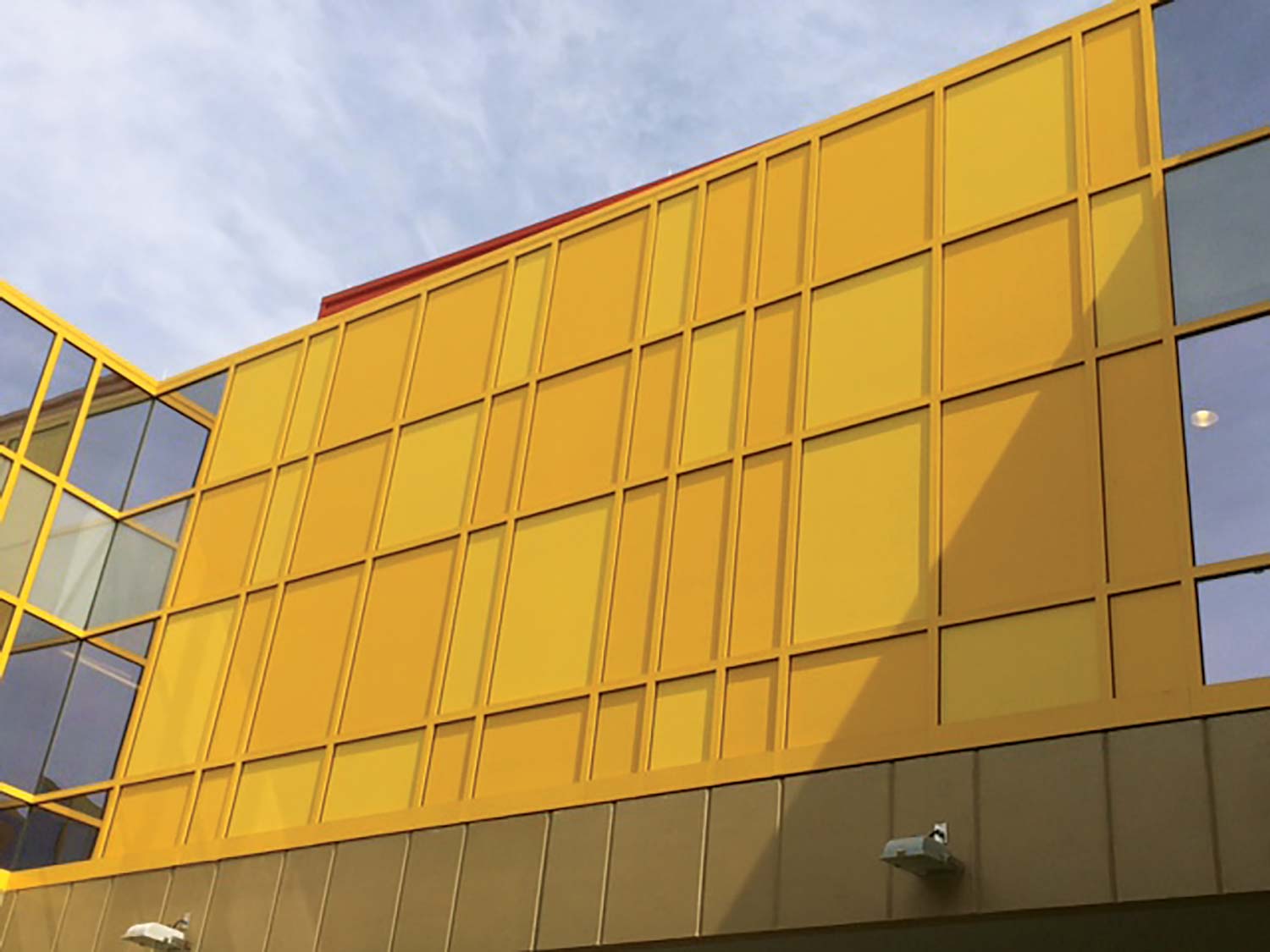
Safety is a key consideration in any building design, and fire protection should be a top priority when it comes to commercial construction. As the demand for occupant safety grows, fire rated panels are becoming an essential building component to ensure the highest-performing structure possible.
By preventing the spread of fire, allowing increased evacuation times and meeting stringent building codes, fire-resistant infill panels can take your designs to the next level.
What Are Fire Rated Panels?
Made from non-combustible or fire-retardant materials, fire rated panels are specialized building materials designed to slow the spread of fire and meet fire code regulations in commercial buildings.
In terms of construction, fire rated panels are most typically used for:
- Fire Rated Partitions and Walls: Fire rated panels in office buildings, hospitals and schools are used to compartmentalize fire and reduce smoke.
- Exterior Cladding and Facades: Spandrel panels and rainscreen systems provide fire protection without detracting from the building’s aesthetic appeal.
- Escape Routes and Stairwells: Fire rated panels ensure safe evacuation during an emergency.
- Industrial and Data Centers: Electrical rooms and server spaces need fire rated enclosures to protect important and sensitive information.
Understanding Fire Ratings and Standards
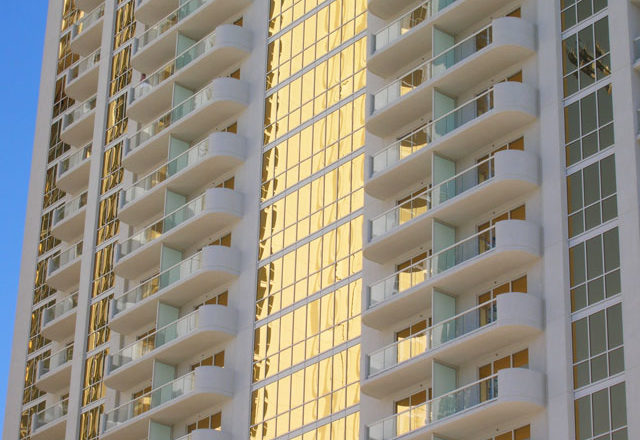
To fully understand the need for fire rated panels and the necessity of including them in the design and building processes, you need to first understand fire ratings and standards.
Fire ratings and standards in commercial construction define how materials, assemblies and systems resist fire, smoke and heat for a specified duration. Compliance ensures life safety, structural integrity and adherence to building codes.
Time-Based Classification
Expressed in minutes or hours, fire ratings measure how long a material or assembly can withstand fire exposure before failing. Time-based fire ratings apply to:
- Walls and Partitions: Fire rated drywall, masonry or panel systems
- Ceilings and Floors: Fire-resistant suspended ceilings and floor assemblies
- Doors and Windows: Fire rated glazing and steel doors
- Structural Elements: Fireproofed steel columns and beams
Key Fire Standards
International and U.S. fire standard codes include:
- ASTM E119 (UL 263): This is a fire-resistance test for walls, floors, roofs and structural components.
- ASTM E84: This test determines surface burning characteristics, specifically smoke development and flame spread, of building materials.
- NFPA 285: This includes fire propagation test for exterior wall assemblies, which is critical for combustible cladding systems.
- NFPA 252 / UL 10B & 10C: These are fire testing for doors and windows.
- NFPA 251 / ANSI UL 1709: These test fire protection for structural steel in high-risk environments.
- IBC (International Building Code): This governs fire-resistance requirements for commercial buildings in the U.S.
How Fire Rated Panels Are Tested
Fire rated infill panels are tested through rigorous procedures that assess how the assembled panel withstands fire exposure while maintaining structural integrity and limiting heat transfer.
Testing includes subjecting panels to controlled fire conditions in a furnace. The infill panels are installed in a test frame that replicates real-world applications, and their performance is measured based on criteria like flame spread, insulation efficiency and load-bearing capacity.
During the fire resistance test, thermocouples monitor temperature rise. Measurements and observations determine if the panel resists ignition, prevents structural failure and maintains compartmentation.
Only infill panels that meet or exceed the codes and standards set by governing authorities receive fire ratings, allowing you to trust that a fire rated panel meets the strict criteria for building codes and safety requirements.
Different Types of Fire Rated Panels

All fire rated panels are not created equal. The material of the panel and its insulation vary, and each type of fire rated panel is designed to meet different fire protection and thermal performance needs in commercial buildings.
Choosing the right type of fire rated panel depends on factors like building function, fire-rating requirements and design aesthetics.
MapeStop
MapeStop fire rated panels are architectural panels with a high insulation value that are available in all architectural finishes to achieve specific aesthetic designs.
They are Class A Fire rated per ASTM E84 and come in two options:
- 15/20 Minute Panels: Ideal for doors, transoms, window replacements, curtain walls and spandrel areas, these panels have a time rating of 15-20 minutes.
- Non-Combustible Panels: These panels have a Zero’ Flame Spread Rating (per ASTM E84) and No Foam Plastic Insulation (NFPA 285) to create a non-combustible solution. These panels are ideal for buildings with stringent fire-resistance requirements like high rises and commercial spaces.
Comparing Fire Rated Panel Materials
Fire rated infill panels use various insulation materials that all have unique properties. When comparing fire rated panels, be sure to evaluate each insulation’s fire resistance, thermal performance and structural benefits.
- Mineral Wool: This is a popular choice due to its non-combustibility, excellent thermal insulation and soundproofing properties, making it ideal for curtain wall applications.
- Gypsum Board Substrates: Typically used as an interior substrate to meet fire codes, gypsum board substrates prevent fire and heat from spreading. This allows more time for a safe evacuation and for emergency personnel to arrive.
How to Choose the Right Fire Rated Panel
When choosing the right fire rated panel for a particular project, several factors should be considered to maintain the project’s design integrity while prioritizing the best fire protection.
Always consider these factors when choosing the right fire rated panel for your project.
Building Height
When selecting a fire rated infill panel for a building, the structure’s height plays a critical role in determining the appropriate fire-resistance rating.
Taller buildings have unique fire safety requirements due to the increased potential for fire spread and longer evacuation times. For tall building projects, the fire rated infill panels must provide adequate protection for both the building’s occupants and its structural integrity.
The higher the building, the more stringent the fire-resistance rating is needed to ensure the panels can withstand exposure to extreme temperatures for extended periods.
Fire Load
Fire load is a crucial consideration when choosing a fire rated infill panel because it directly impacts the material’s ability to withstand and contain a fire.
Fire load refers to the amount of combustible material present within a given area, including furnishings, finishes and structural components, which can contribute to the intensity and duration of a fire.
In areas with a higher fire load, the infill panels must be selected to withstand the potential heat release and prevent the fire from spreading.
Codes
Building and fire codes, which vary by location, dictate the fire-resistance rating needed based on factors like the building’s height, occupancy type and the specific risks associated with its function.
Creating a design that meets these regulations is essential for ensuring occupant safety and achieving compliance with local and national fire safety standards.
Failure to meet the required fire ratings could result in penalties, delays or even jeopardize the building’s occupancy approval.
Improve Building Safety And Do It With Style
Mapes fire rated panels are designed to meet modern design aesthetics and provide the highest quality fire protection for occupant and building safety.
MapeStop fire-resistant panels are the ideal solution for fire rated glazing applications. They can be custom-designed with various substrates and insulations to meet design requirements and building codes, including IBC and NFPA 285.
Discover the range of fire rated Mapes panels or browse the Mapes Selection Guide to find a solution that provides protection for the building without sacrificing style.
Insulated Panels: A Guide to Better R-Value
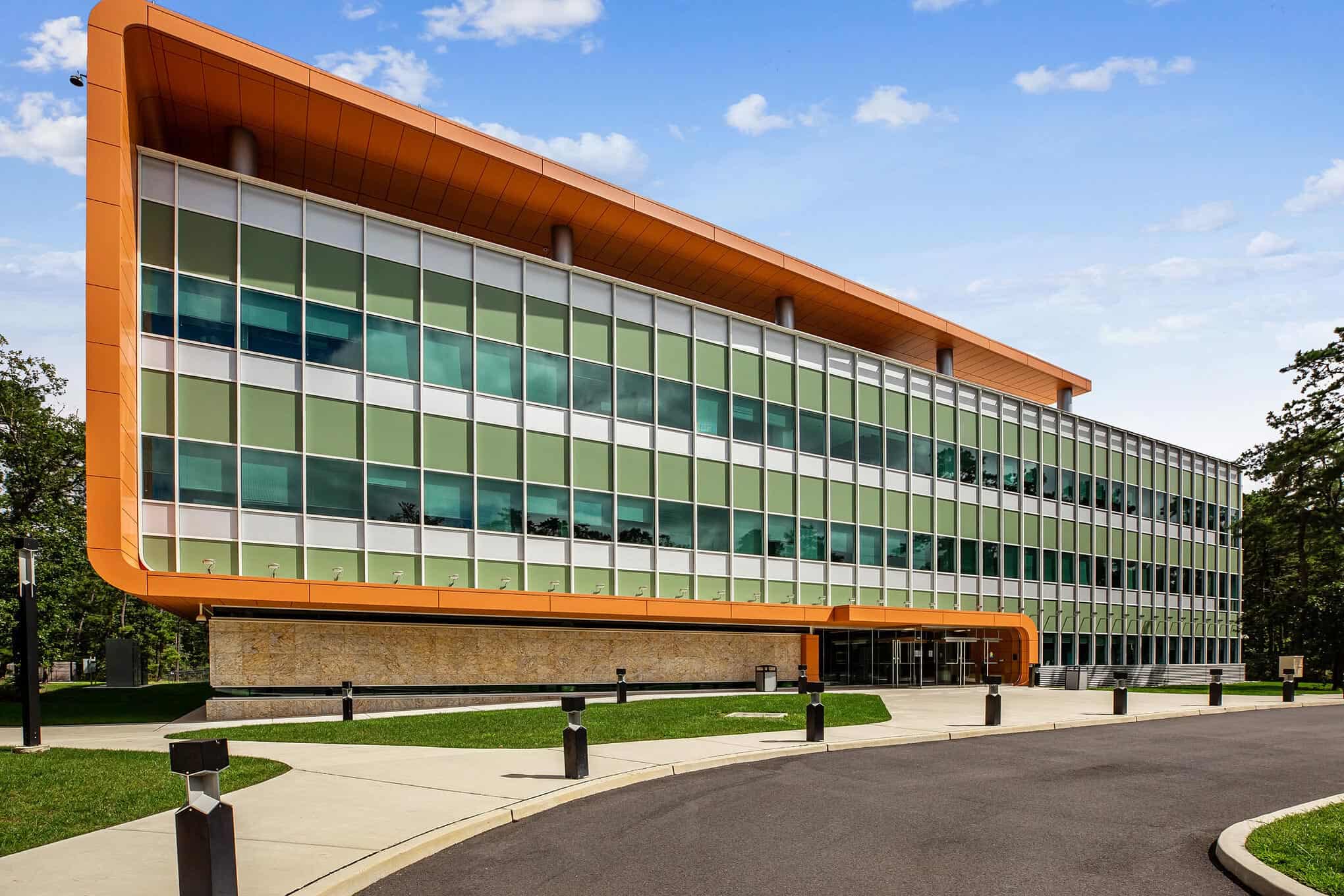
Infill panels in a curtain wall serve several roles in a building’s overall performance — insulation being a major one. The insulated panels’ thermal resistance, also known as the R-value, will directly impact the building’s energy efficiency and the associated heating and cooling costs.
Because energy efficiency can affect the space’s longevity, comfort, marketability and productivity, choosing insulated panels with the best R-value is essential.
Understanding R-value and discovering what’s available with insulated infill panels will allow you to select the most energy-efficient solution for your next project.
What is R-Value?
The R-value of an insulated panel is the thermal resistance of that material — it measures how well a material resists the flow of heat. Insulated panels with a higher R-value have better thermal efficiency and less heat transfer.
The formula that’s used to determine the R-value of an insulated material is:
R-value = Thickness of material / Thermal conductivity (also called the K-value)
A higher R-value means that a material has better insulation performance, meaning the material will resist heat transfer more effectively.
Understanding Thermal Resistance
Heat naturally flows from warmer areas to cooler areas. If you’re trying to keep heat inside a building in winter or outside during summer, you want materials with high thermal resistance to minimize this flow.
Materials that have low thermal conductivity like foam or fiberglass have a high R-value because they resist the flow of heat. Thick materials, or layered materials, also have a high R-value because they block heat from transferring out.
How R-Value Affects Energy Efficiency
When architects are designing buildings, they look for building materials that are going to have the best durability and energy efficiency over time. Insulated infill panels have a high R-value, allowing for stable and comfortable temperatures.
By resisting heat transfer, insulated panels reduce the need for heating and cooling, leading to lower energy consumption. This is especially important for large buildings where energy costs can be significant.
Buildings with better thermal performance are more energy-efficient, helping reduce carbon footprints and meet the requirements of green building initiatives. Some insulated infill panels are designed to meet environmental standards like LEED.
Types of Insulated Panels and Their R-Value
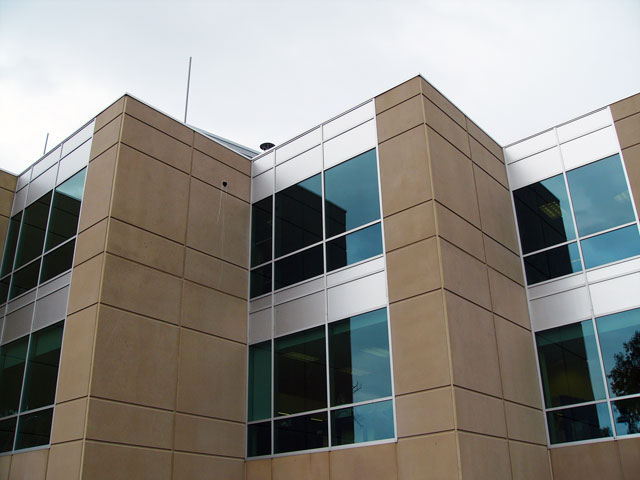
Insulated infill panels’ thermal resistance plays a critical role in regulating the internal temperature of the building and contributing to energy efficiency.
Insulated infill panels made from insulated metal, glass, concrete or EPS all have different R-values because the materials they’re made from have different thermal resistance properties. The R-value of the panel depends on the material’s thickness and its thermal conductivity:
- Insulated Metal Panels: These can have R-values ranging from R-2 to R-6 per inch of thickness, depending on the type of insulation used in the core. Panels can be made up to 6 inches thick, offering an R-value of 40 or higher.
- Glass Panels: Standard glass panels have low thermal resistance, typically around R-1 to R-2. However, modern low-emissivity (Low-E) glass can improve thermal performance.
Materials with higher R-values like EPS have a low amount of heat transfer so they are almost always the best choice for commercial building projects. Materials with lower R-values like glass are not as effective at maintaining a comfortable temperature and can increase heating and cooling costs.
Comparing Mapes-R, Mapes-R+ and Other Panels
At Mapes, our insulated sandwich panels are an energy-efficient, cost-effective alternative to insulated glass, Low E Glass and other glazing options for new builds. Curtain wall, window infill and spandrel panel projects can be designed to provide optimal insulation and aesthetic appearance.
To meet the energy design requirements of various projects, we can produce insulated panels in any thickness between ½ inch and 6 inches. The overall thickness of the panel is determined by the thickness of the insulation used in the panel’s core. The thicker the insulation, the higher the R-value.
The types of insulation we use for our panels are:
- Polyisocyanurate: This offers the highest R-value, with a 1-inch panel achieving an approximate R-value of 6.4.
- Polystyrene: This is our most common insulation type due to its lower price and high R-value. A 1-inch panel achieves an approximate R-value of 4.6.
- Micore: This solution is typically used when a non-combustible product is required (NFPA 285). A 1-inch panel achieves an approximate R-value of 2.5
Here’s a better look at our panels compared to standard glass and brick panel options.
Mapes-R Panels
With an R-value of up to 40, Mapes-R panels offer various solutions to improve the thermal efficiency of window, spandrel, curtain wall and glazing applications.
Mapes-R panels can be manufactured to match any architectural finish including Kynar, anodized, powder coat, stainless steel, baked enamel and more. In addition to thermal improvement, Mapes-R panels can meet local building codes for sound, fire and impact resistance.
Mapes-R+ Panels

For projects where energy efficiency is an integral part of the design, Mapes-R+ panels deliver an increased R-value of up to 500% without modifying an existing frame.
Mapes-R+ panels are perfect for applications like windows, curtain walls, spandrel areas and storefronts. The rabbeted edges on the panel’s interior side allow the panel to be thicker than the glazing pocket will allow.
These panels can be up to 6 inches thick with isocyanurate insulation to achieve an approximate R-value greater than 40, and they can still be installed in a 1-inch deep glazing pocket (or other glazing pocket depth).
Other Panels
Other panels like glass and brick panels have significantly lower R-values, making them a poor choice for commercial building applications.
Standard glass panels have low thermal resistance, typically around R-1 to R-2. Similarly, brick or concrete panels have low R-values usually around R-1 to R-2.
However, they can be used with other materials, like insulation boards, to achieve better thermal resistance.
Benefits of High R-Value Panels

High R-value infill panels are a smart choice for architects and builders because they have significant advantages in energy efficiency, building performance, and cost savings. Here’s why they matter:
Enhanced Thermal Performance and Energy Cost Savings
High R-value panels provide superior insulation and reduce heat transfer through the building envelope.
By minimizing heat loss in winter and heat gain in summer, these panels reduce energy consumption. Over time, this translates to significant cost savings on heating and cooling, making them a financially sound choice for long-term building operations.
It also allows building owners to purchase a smaller HVAC system, saving on initial and long-term expenses.
Improved Building Envelope Performance
High R-value infill panels contribute to a tighter building envelope, reducing air leakage and improving moisture control. This prevents issues like condensation, mold growth and structural degradation, ensuring a more durable and low-maintenance building.
Faster Installation & Reduced Labor Costs
Prefabricated insulated infill panels streamline the construction process. Their lightweight nature makes handling easier for crew members, maintaining high structural integrity while reducing installation time and labor costs.
Design Flexibility & Aesthetic Integration
Modern high R-value panels come in a variety of finishes, sizes and configurations, allowing architects to integrate them seamlessly into different design visions without compromising performance.
Choosing the Right Insulated Panel for Your Project
When deciding on the right insulated panel for your project, there are several factors that you should consider in addition to the R-value of the panels.
Climate Considerations
The new building’s climate plays a major role in the design decisions, as certain factors can impact energy efficiency.
Temperature Extremes
Cold climates require high-R value panels with superior thermal resistance to reduce heat loss and prevent condensation within the wall assembly. Insulated metal panels (IMPs) and structural insulated panels (SIPs) are highly recommended for cold climates.
Hot climates need panels with reflective surfaces or cool roof coatings to minimize heat absorption and reduce cooling loads and energy costs.
Buildings in mixed climates require dynamic insulation solutions that balance thermal performance throughout seasonal temperature shifts.
Humidity & Moisture Control
When building in high-humidity regions, vapor barriers and moisture-resistant insulated infill panels are necessary to prevent condensation and combat mold growth. Panels with integrated air and moisture barriers can enhance long-term performance.
In dry climates, moisture control is less critical, but UV resistance and thermal stability should be prioritized to prevent material degradation.
Budget and Code Compliance
Budget is always a consideration, but that doesn’t mean that the insulated infill panels with the lowest price are the best choice.
It’s important to weigh the upfront costs with the long-term benefits of any infill panels that you’re considering. Remember to factor in the cost of transportation and the labor cost of assembling the panels on the job site.
For code compliance, check state energy and building code requirements. High-performance panels can also contribute to qualifying for LEED or net-zero energy building certifications.
How To Select The Right Infill Panels For Your Project

The experts at Mapes want to help you choose the right insulated infill panels for your project to provide the best energy efficiency.
Look through our available panels to learn more about the panels we offer and to find the right panel for your project. Or, you can check out the Mapes’ selection guide if you need guidance in choosing the most energy-efficient panels for a current or upcoming project.
Green Panels: Lowering Heating and Cooling Costs
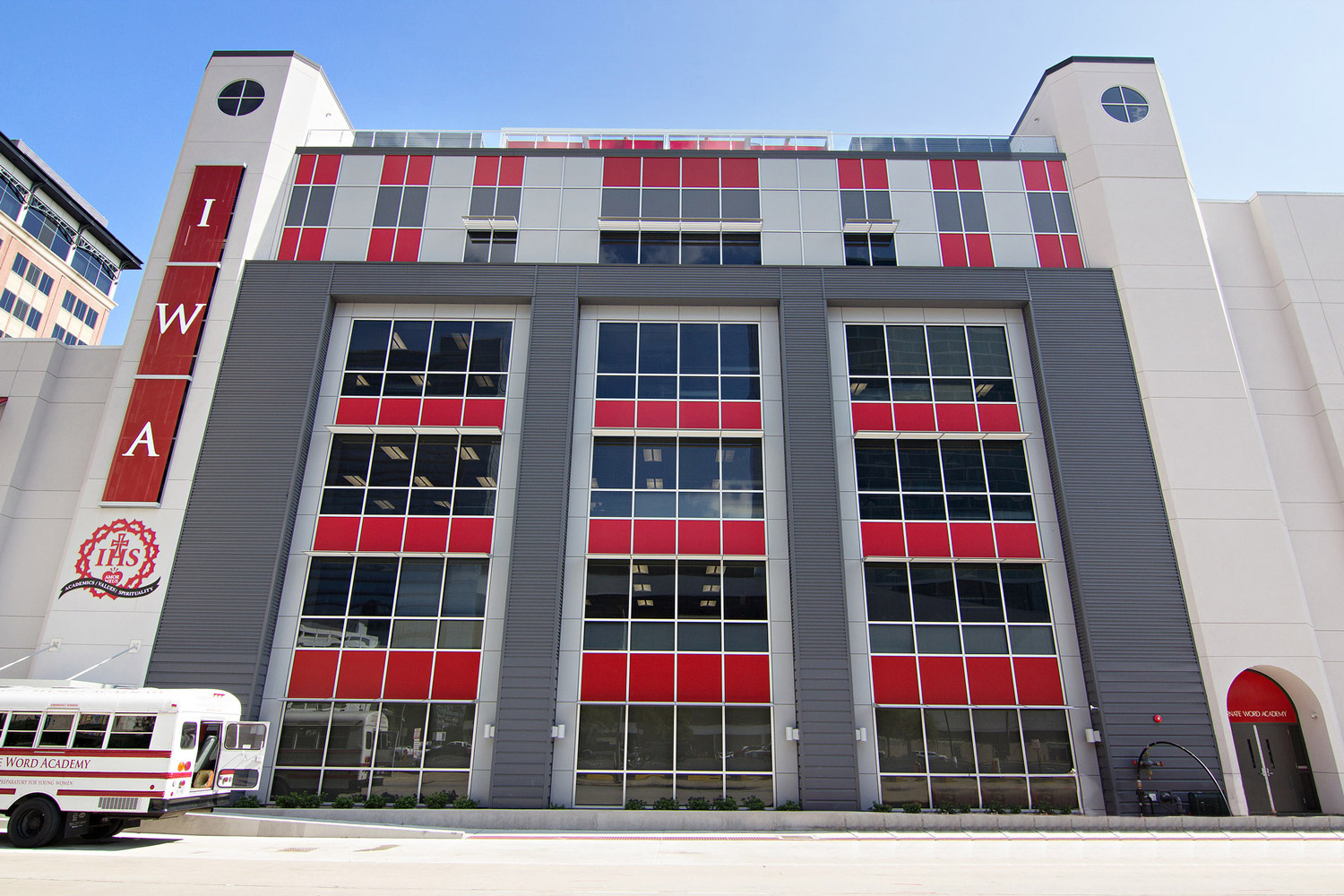
Efficiency and sustainability are key considerations when building larger commercial buildings, impacting many design and material choices throughout the process. One option available to architects is green panels.
By using building materials that not only improve aesthetics but also mitigate heating and cooling costs, architects and builders can make their projects more appealing to potential clients and customers.
In fact, according to the Insulation Institute, lease rates for buildings with green materials like green panels can be up to 20% higher than average, which is a big selling point. The Insulation Institute also reports that more than a dozen larger cities now require that existing buildings be rated on their energy use.
That rating is publicly available and can factor into real estate deals, making it a worthy consideration for all industry professionals.
Understanding Green Panels
Green panels and building materials are built to maximize thermal efficiency to improve the functionality of the building without sacrificing any of the design aesthetics that make it unique.
Infill panels are a commonly used green panel solution, helping builders and architects elevate their designs while staying environmentally conscious.
Constructed from multiple thin layers of different materials, infill panels typically have a core made from polyurethane, polystyrene or mineral wool that is sandwiched between rigid facings made from metal.
The layered construction of the panel increases the thermal performance of the building by reducing the heat transfer and the overall amount of energy needed to maintain cool or warm temperatures inside.
Mapes’ insulated infill panels are made with an exclusive, high-density polystyrene core that increases the efficiency of an infill panel by more than 30%. They also have a two-pound density core that insulates without adding bulk so the panels are flat and easy to integrate into existing glazing systems.
These infill panels have long-term cost-effectiveness for commercial construction because they can lower heating and cooling expenses over the lifespan of the building.
Enhancing Building Sustainability With Green Panels
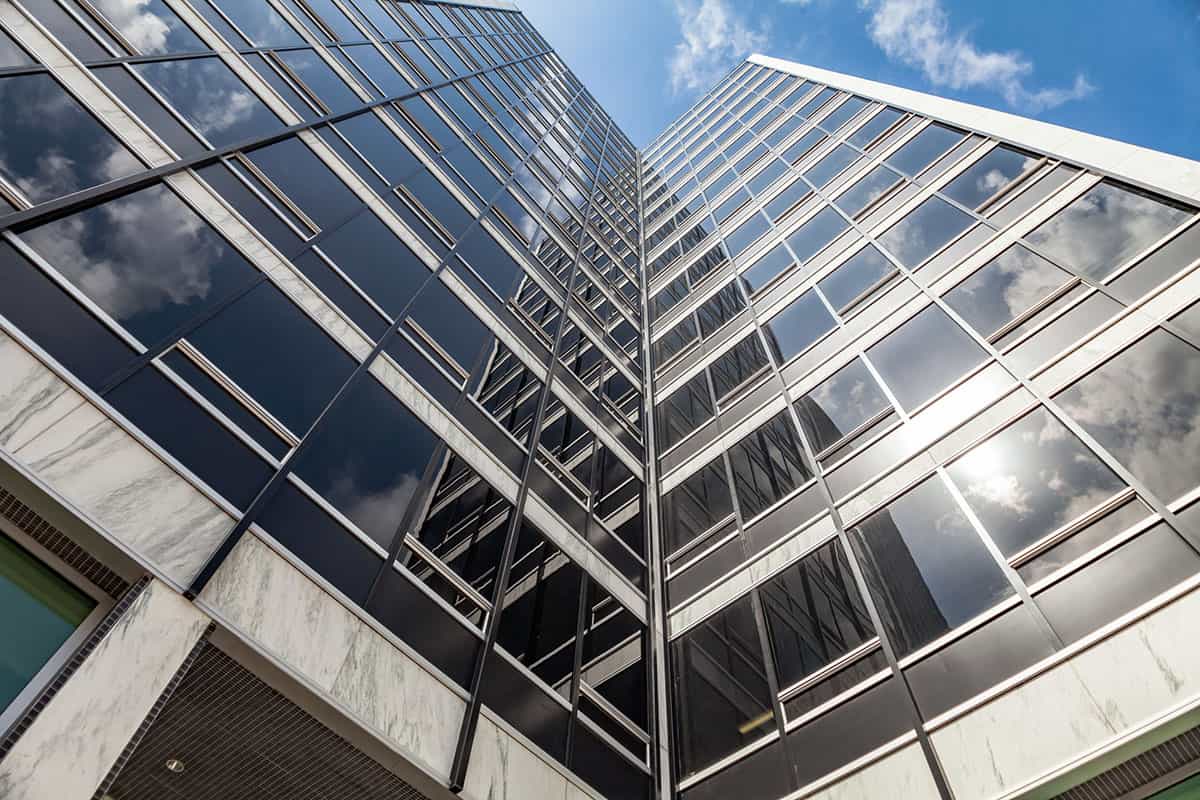
According to Columbia University, commercial buildings are responsible for about 40% of emissions worldwide. That number is projected to significantly increase by 2030 unless modern architecture embraces green design and materials.
Architects can use green panels to design buildings that meet current sustainability requirements and future regulations, so expensive retrofitting isn’t necessary.
By designing buildings using the best green construction materials, like Mapes panels, architects are future-proofing their buildings and making their designs more attractive to investors.
Compliance With Environmental Regulations and Certifications
Integrating building components that are energy efficient and made using green materials and manufacturing processes can make it easier to meet local regulations and get LEED certification.
While LEED certification isn’t required, it’s strongly recommended because of the impact it can have on the value of the building. The LEED certification can increase the building’s value and possibly make the builder eligible for local efficiency incentives or rebates.
LEED Certification for Commercial Projects
LEED certification is issued by the U.S. Green Building Council (USGBC) after a thorough review of an architect’s plans or existing building.
The first step in getting LEED certification is meeting basic requirements such as:
- Comply with environmental laws
- Be a complete, permanent building
- Use a reasonable site boundary
- Comply with minimum floor area requirements
- Comply with minimum occupancy requirements
- Commit to sharing whole-building energy and water usage data
- Comply with a minimum building area-to-site-area ratio
There is a multi-stage review where the committee will look at the design or construction to see if the process and materials used meet the sustainability requirements set by the USGBC.
Getting LEED certification takes time but will greatly increase the value of the building.
Integration Into Modern Architectural Design
Flat infill panels can fit into any glazing system, so retrofitting an existing building with sustainable materials and giving it a modern style upgrade is easy to do with Mapes’ solutions.
Mapes panels are available in a large range of colors and finishes, including six premium 70% PVDF metallics which are perfect for a style facelift. Standard 70% PVDF colors come in 32 stunning options and can be smooth or embossed.
Baked enamel, anodized aluminum and custom-colored spandrel glass are also available so that architects can put their own creative stamp on their designs without sacrificing sustainability.
Strategies for Efficient Energy Management
Integrating green building materials into a design will do more than just ensure the building meets local building codes.
It helps control heating and cooling costs for the people working, learning or living inside the building. Building with energy-efficient infill panels and other materials will reduce thermal transfer without sacrificing essentials like natural light.
There are also sustainable innovations in construction, such as plant walls, living roofs, solar roofs and the integration of green spaces into the design of a building. These innovations will create sustainable indoor/outdoor spaces with maximum energy efficiency to maintain moderate indoor temperatures year-round.
Find the Right Mapes Product for Your Next Project
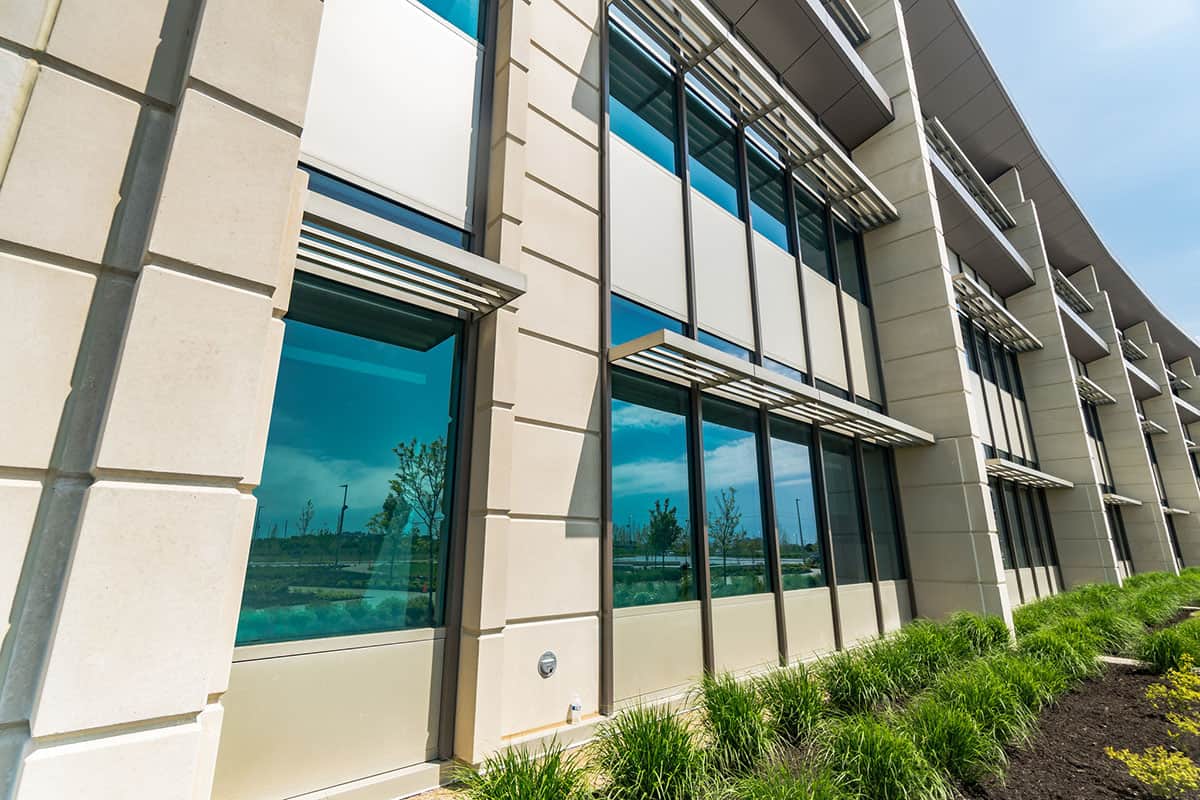
Mapes has been an industry leader in sustainable and innovative construction materials for four generations.
As the modern building industry shifts to incorporating energy-efficient and green materials, we are committed to designing and producing innovative green products that give architects the style options they need without compromising sustainability or energy efficiency.
Browse our products to find the best architectural panels for your current designs, or talk to a member of our design team to learn more about how our panels can lower building costs without sacrificing quality.
Innovating Florida Product Approval Compliance With Mapes Architectural Panels
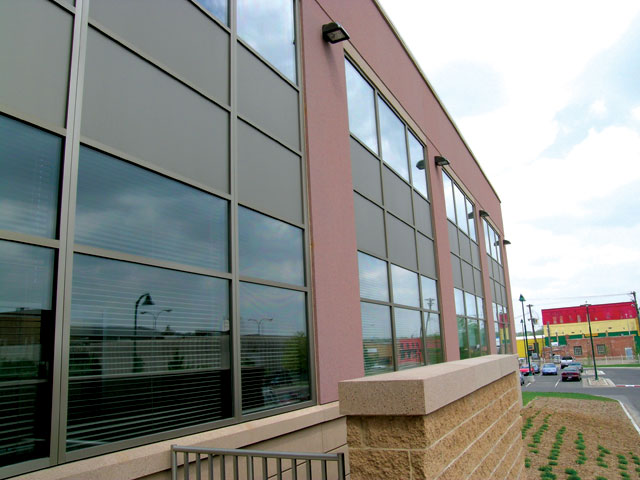
Florida Product Approval is a certification that guarantees building materials are strong enough to withstand extreme weather like hurricanes. Building with materials that have this critical approval can ensure safety and protect investments by preventing damage from debris and high winds.
With extreme weather becoming the new normal for the coasts, it’s more important than ever that architects design buildings that can endure extreme weather events.
Understanding Florida Product Approval Compliance

Florida Product Approval was authorized by the 1998 Florida Legislature to ensure that building products meet exacting performance standards.
Buildings designed and built with materials that have passed the stringent tests have a competitive edge. They are also safer and more likely to meet local building requirements, which is a significant selling point, especially in regions with high-impact requirements.
Mapes Architectural Panels’ Approach to Compliance
Mapes has always been an industry leader in developing architectural panels that blend performance and beauty.
For example, Mapes’ MapeShield Impact-Resistant panels are Florida Product Approved and can withstand extreme impact without diminishing their strength or appearance.
Compliance Processes and Procedures
The testing process for Florida Product Approval can take months, so manufacturers like Mapes ensure their product is as high performing as possible before submitting. There are three steps:
- Independent Third-Party Testing: The manufacturer must contact an independent testing agency to test mock-up pieces of the product in their lab. Independent labs conduct the necessary tests to verify that products meet the required performance standards. Their findings are crucial to the approval process, ensuring unbiased and accurate results.
- Engineering Review: After a third-party lab has tested the product, a Florida-licensed engineer reviews the test reports to confirm they meet Florida’s standards.
- Approval and Maintenance: Once the product has passed the first two phases of the approval process, the product must maintain quality standards. Regular maintenance and retesting every three years are required.
You can find out more about the actual tests performed for Florida Product Approval and the criteria used for certification here.
Benefits of Mapes Architectural Panels’ Compliance
With the increased number of natural disasters, more buildings are made with tighter building codes to make the structures safer for longer. Architects and builders need to be extra careful in selecting the materials, ensuring they’ve been tested and certified.
Architects and builders know the quality of Mapes architectural panels — Mapes has a well-known reputation for quality and is constantly reinventing processes to create panels that balance design with durability. Industry professionals choose MapeShield panels because they want to create buildings that will maintain their appearance and strength for years to come.
Because MapeShield architectural panels received Florida Product Approval, architects can rest assured that the Mapes products they use will be able to withstand the elements.
Learn More About MapeShield Architectural Panels
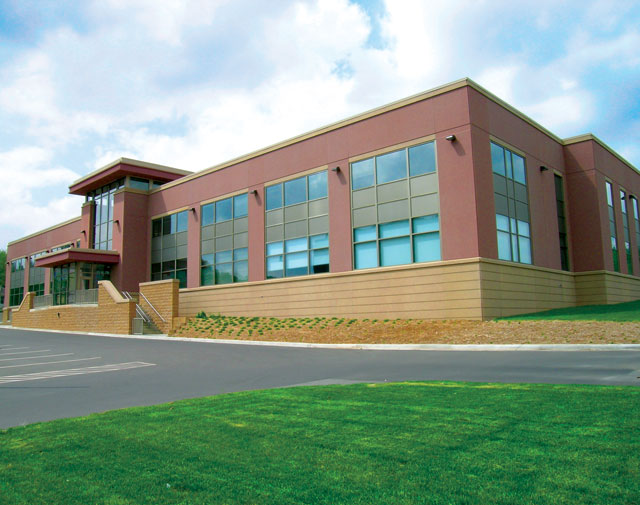
With the combination of strength, design and compliance, MapeShield panels are an excellent choice for any construction project. They can be customized to fit your signature style or to meet brand standards for building designs.
Reach out to Mapes to find the perfect panels to fit your project’s aesthetic and durability needs.
Bulletproof Panels: Strengthening Safety in Commercial Spaces
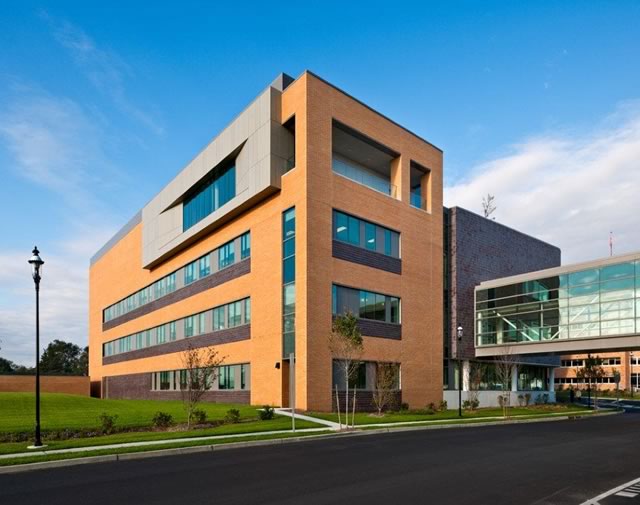
Public safety has become an increasingly important consideration for building owners, especially with the uptick in gun violence in recent years. A study done by the National Institute of Justice found that the number of mass shootings continues to climb, with Pew Research reporting that “more Americans died of gun-related injuries in 2021 than in any other year on record.”
With these sobering statistics in mind, architects need to consider integrating bulletproof or bullet-resistant materials into their buildings. To support these efforts, Mapes and other manufacturers work to create bullet-resistant infill panels that architects can use to increase building and occupant protection.
Understanding MapeShield Bullet-Resistant Panels
Bullet-resistant architectural panels — like the MapeShield panels — use fiberglass to dampen the energy of bullets and stop them from going through the walls.
When a bullet hits the panel, the fiberglass sheet inside the infill panel absorbs the bullet’s energy and diffuses it, slowing the bullet and stopping it from going through the wall.
Composition and Functionality
MapeShield bullet-resistant panels have a layer of Armortex bullet-resistant fiberglass inside. The sheets are made from roving ballistic-grade fiberglass that is treated with a thermoset resin via mechanical injection and placed in a hydraulic hot press where it is formed into flat, rigid sheets.
The fiberglass panels inside MapeShield bullet-resistant infill panels have been tested for ballistic levels 1-8. According to Armortex, products certified for UL level 1 protection can withstand three shots from a 9mm handgun at velocities of up to 1295 feet per second (ft/sec).
Fiberglass panels certified for UL level 8 protection can withstand five shots from a 7.62mm assault rifle at velocities of up to 3025 ft/sec. They’re also approved by the U.S. Marshal Service, the General Services Administration and other government agencies for use because of their bullet resistance.
Impact on Safety Standards in Educational and Healthcare Facilities
With rising concerns about gun violence, schools and healthcare facilities are looking for ways to increase protection. Architects are working with hospitals and schools to retrofit existing facilities with bullet-resistant panels.
Compliance with Regulations and Standards
There are no national requirements for using bullet-resistant panels in construction, but some cities may have their own regulations, especially in dense urban areas with a high crime rate.
Through education, trainings, drills and enhanced technologies, hospitals and schools are incorporating tactics to keep occupants safe. Pairing those strategies with retrofitting existing construction — like adding bullet-resistant panels — can help increase protection from gun violence significantly.
Influence on Architectural Design in Educational and Healthcare Facilities
The need for protection against gun violence means that architects need bullet-resistant infill panels that are available in a wide range of colors, thicknesses and styles so that they can seamlessly integrate into the building design.
Integration Into Modern Construction Practices
While safety has always been a priority in designs, modern architects have the advantage of technological advances in construction material manufacturing that make stylish and customizable bullet-resistant panels available for any commercial building.
Retrofitting existing buildings with infill panels that feature bullet-resistant fiberglass sheets is possible because the panels can match existing colors and styles.
Anticipating Future Trends and Innovations in School and Hospital Safety
As the safety needs of the public evolve, so will construction materials that can make buildings safer.
While bullet-resistant and bulletproof panels are becoming popular additions to building designs, architects will likely be designing buildings that can also resist forced entry in the near future.
Because occupant protection continues to be a focus for industry professionals, fire protection and blast protection are predicted as future construction trends as well.
Mapes Bullet-Resistant Panels Combine Safety With Style
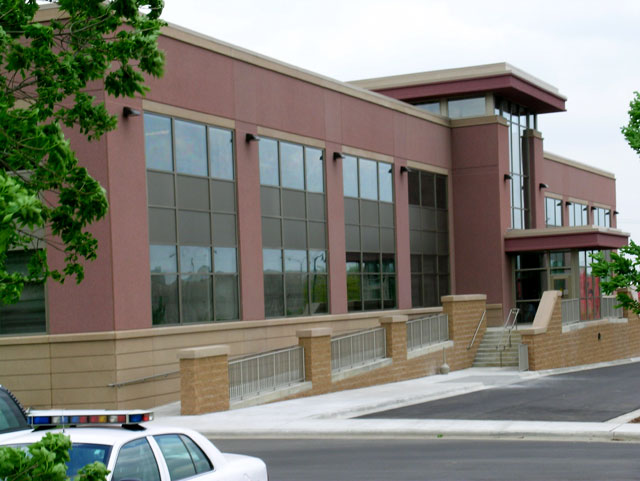
MapeShield bullet-resistant panels have the same customization options that other Mapes products have, so you can bring your style vision to life without sacrificing safety.
Contact us to learn more about MapeShield bullet-resistant architectural panels and how to create safer buildings for your community.
Impact Resistant Panels: Building Safety and Durability

Buildings in areas with severe weather need the protection of impact resistant architectural panels. Not only will these panels protect building inhabitants from inclement weather, but they also make buildings more durable and energy-efficient.
Storefronts, hospitals, fire and police stations and other commercial buildings the community relies on should incorporate missile and weather-resistant panels into the design to ensure they can handle anything Mother Nature throws at them.
What Are Impact Resistant Panels?
Impact resistant panels are architectural panels designed for maximum protection from wind, rain, projectiles and debris like tree branches and other weather-related elements that can cause significant damage to traditional panels.
They are carefully tested and made from more robust materials than traditional panels and are layered to provide uniform strength and durability. For example, MapeShield panels are six layers thick with a hardboard substrate so they won’t fail in extreme conditions.
Resistance to Impact
Hurricane-force winds can turn almost anything into a dangerous projectile and slam it into buildings with immense force.
Utility poles, cars, shopping carts, mailboxes, outdoor furniture and more can all be blown directly at buildings during a hurricane. To avoid major damage and possible danger to the people inside the building, architectural panels have to resist the impact of some large and heavy items.
MapeShield panels are tested for hurricane impact resistance and have received Florida Product Approval, which means they are approved for use in high-velocity hurricane zones. The Florida Product Approval also means that these panels meet all Florida codes and regulations for commercial buildings.
Durability Factors
Architectural panels are designed to be durable, but impact resistant panels meet higher durability standards because they must withstand more extreme conditions and last over time.
Using lightweight materials layered for strength makes panels strong without adding bulk. They don’t need any special care to hold up over time, even after exposure to severe weather.
With basic cleaning and maintenance, they can last for decades. For example, MapeShield impact resistant panels have a 25-year lamination warranty.
Materials and Construction
MapeShield impact resistant panels can be made up to six inches thick and composed of six layers. Every panel has:
- Exterior skin
- Layer of high-density hardboard
- Layer of impact resistant 24-gauge galvanized steel
- Insulating core
- Another layer of high-density hardboard
- Interior skin
They can be installed into any impact-rated framing system but must be installed in a 4-sided captured system.
Applications in Various Industries
Architects can integrate this type of panels into most commercial buildings. They are particularly needed in buildings populated during extreme weather, like healthcare and medical facilities, schools and police and fire stations.
Essentially, any commercial building that operates 24 hours a day or is typically used as a shelter for the community in extreme weather should have impact resistant panels.
Construction and Building
Like other architectural panels, architects can customize impact resistant panels to fit a particular aesthetic or style of building.
With the same finishes and many of the same customization options as other types of panels, it’s easy for architects to create strong, durable, resistant commercial buildings without sacrificing aesthetics.
Healthcare and Medical Facilities
Healthcare and medical facilities particularly benefit from the inclusion of impact resistant panels in their design because of the 24-hour-a-day nature of the facilities.
Architects must prioritize safety and design with panels for the outside of the building, covered walkways and parking structures.
A great example of how Mape panels can fit seamlessly into the design of medical facilities is Shore Memorial Hospital. The hospital has a beautiful, sleek, contemporary design that uses MapeShield panels for safety and protection.

Impact Resistant Panels For Your Next Project
Impact resistant panels are not all created equal. Mapes is a leader in harnessing new building materials and technology to create durable, safe and stylish architectural panels for any commercial building project.
MapeShield impact resistant panels provide industry-recognized impact resistance and style that enhances any design. Contact Mapes today to learn more about MapeShield panels or discuss custom architectural panels for your next project.
You can also check our latest offer to find the best architectural panel solutions for any project.
Exploring the Versatility of Panels in Modern Construction
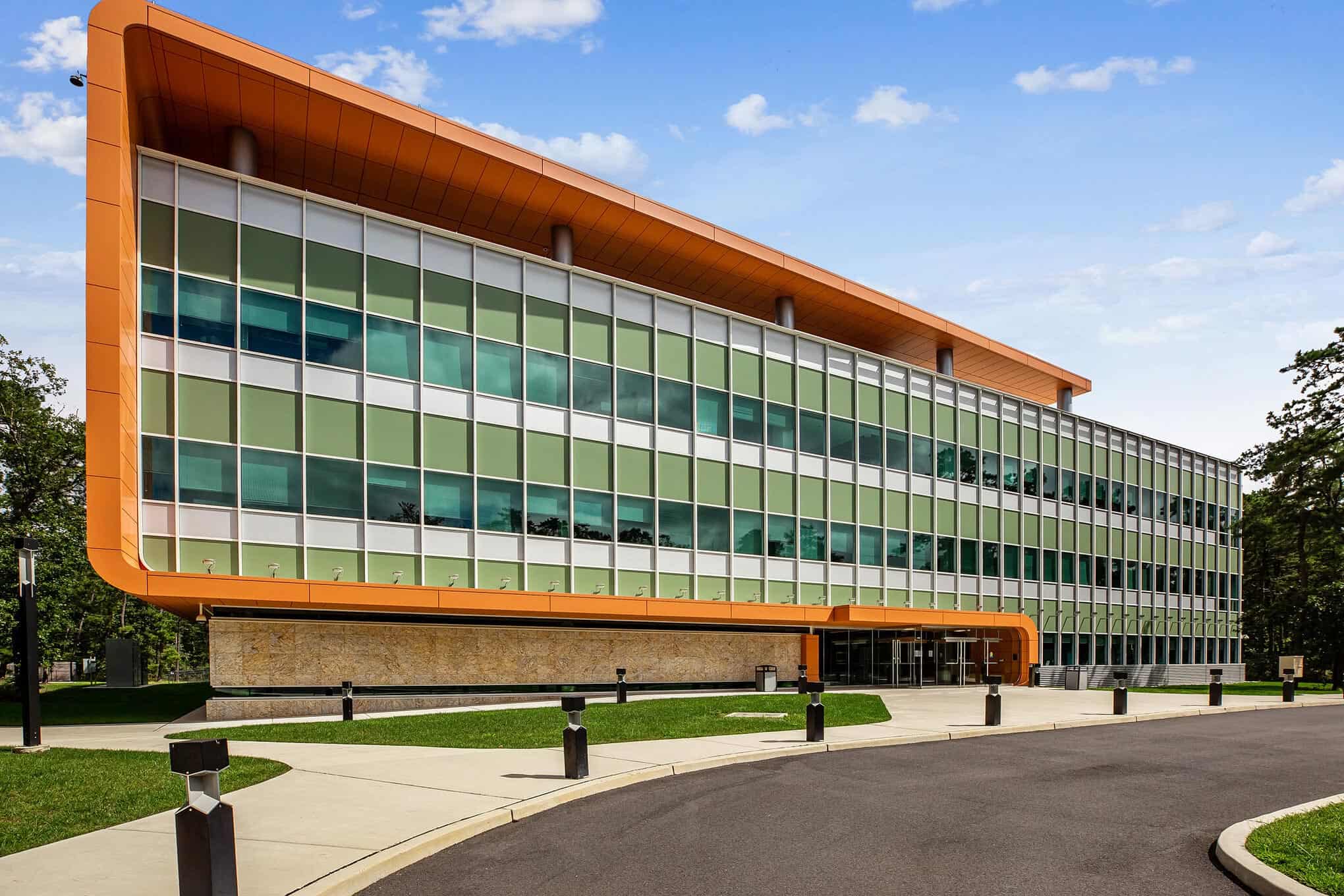
Architectural panels can help architects balance great design with sustainability and energy efficiency. They are versatile enough to match a wide range of design preferences and durable enough to withstand the elements.
Each panel type serves a unique purpose, allowing architects to bring their visions to life. This guide explores the different types of panels available, as well as their benefits.
Understanding Different Types of Panels
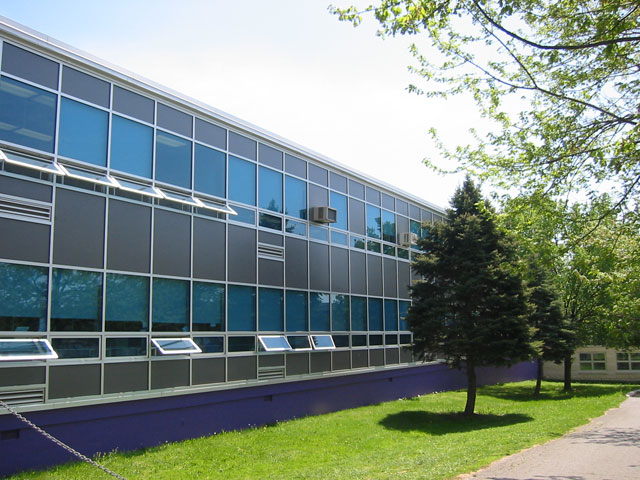
Using different types of architectural panels makes it easy for architects to incorporate modern design trends into energy-efficient buildings. From soffits and fascia to glazing panels and more, the type of panel you choose will depend on your project, location and more.
Soffits and Fascia Panels
Facia, the horizontal board on a roof’s edge, is designed to add support to the roof and help hold the roofing in place.
Soffit, the material located underneath the fascia and eaves, is designed to keep rain and snow away from the roof. Some soffit panels are vented — these let air come through, which can provide essential ventilation to prevent moisture build-up.
Glazing Panels
The glazing system incorporated into a building plays a significant role in the building’s efficiency and aesthetic appeal.
Modern design calls for modern glazing panels that offer the strength of tempered glass panels and aluminum panels with finishes like metallic tones and tinted glass in on-trend shades of gray, dark blue and dark green.
Infill Panels
Infill panels of various thicknesses can be inset into standard glazing openings in buildings to provide support, act as cladding and pad out existing shapes to improve the overall appearance of the building.
Mapes Infill Panels have five layers, including an outer aluminum skin laminated to a substrate with an interior insulated core. Different substrates and insulation materials can be used depending on the needs and requirements for the project regarding R-values, fire rating, impact resistance, and moisture protection. These panels provide superior insulation and protection without adding much to construction costs.
Benefits of Architectural Panels
When choosing the material, color and style of architectural panels, consider their individual features to determine which type is best for your project.
Energy Efficiency
Architectural panels with high R-values, like Mapes R+ Panels, increase a building’s efficiency and keep the interior more comfortable for the people inside.
Energy-efficient architectural panels are essential for modern office buildings, large apartment buildings and other structures that depend on energy efficiency for lower costs and a higher comfort level.
Strength and Durability
Whether it’s infill panels to fill in gaps or soffits made from durable and weather-resistant aluminum, all the product choices made in the building process matter.
Architects can count on dense aluminum architecture and glass panels to provide strength and style.
Style
Designing a building is about more than just durability. Whether it’s designing a building to fit into an existing aesthetic, crafting a building that can be customized for a particular brand identity or creating a unique signature architectural design, designers need customizable architectural panels.
Fortunately, architectural panels from Mapes are customizable and are designed to limit the visibility of floor lines, ensuring that architects will not have to sacrifice design quality for durability or performance.
Get Expert Advice For Your Next Architectural Project
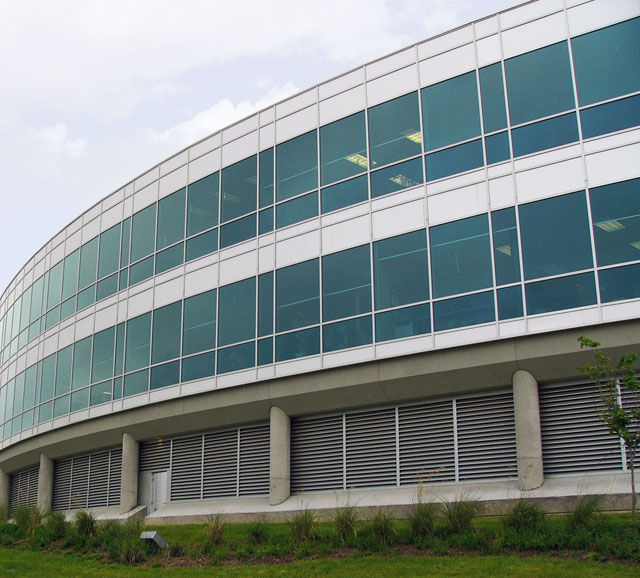
Innovative design isn’t just a trend. It’s a necessity. Mapes architectural panels have the design options that architects want and the strength and durability necessary for longevity.
With more than 70 years of experience creating architectural products that combine time-tested materials and cutting-edge production with design trends, our team can help you choose the right Mapes products for your buildings.
Reach out now to get started on your next project.
Polystyrene Panels: A High-Performing Solution for Construction
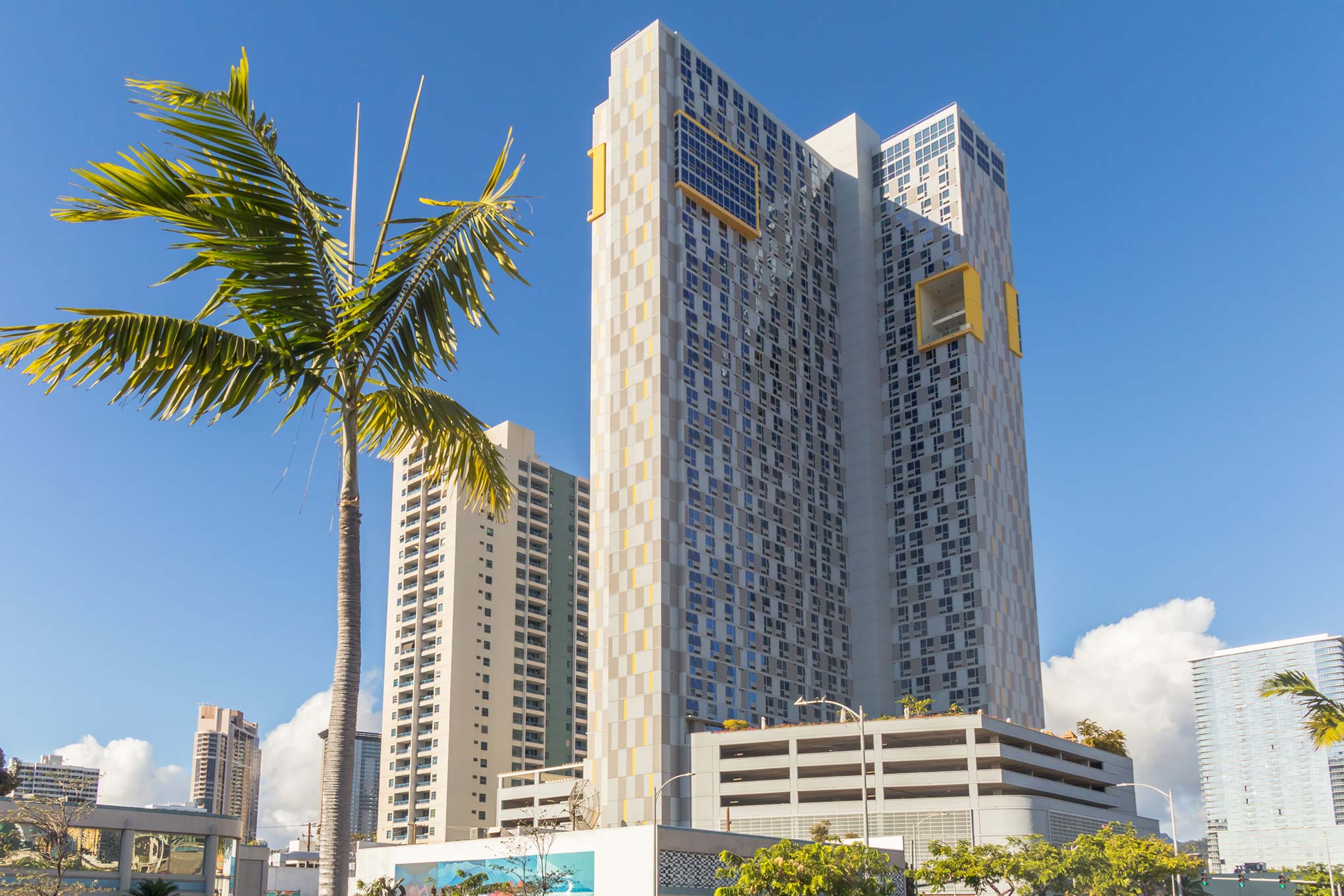
Innovations in the construction industry continue to merge economic efficiency and materials with building owners’ changing needs and desires.
Using new technology and tried-and-true materials like infill panels with a polystyrene core from Mapes streamlines the construction process so that builders can work more efficiently, save money and still deliver the quality that make the buildings aesthetically pleasing, energy-efficient and cost-effective to build.
What Are Infill Panels With a Polystyrene Core?
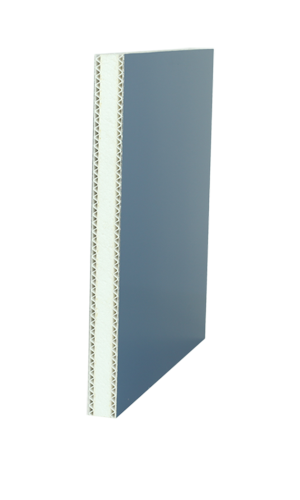
Infill panels with a polystyrene core are one of the products that builders are using to build better and faster without compromising quality.
They are durable, energy-efficient and made from environmentally friendly materials. While these panels can be made with as few as three layers or as many as eight layers, the most common type uses five layers.
Polystyrene-Core Infill Panels: The Five-Layer Design
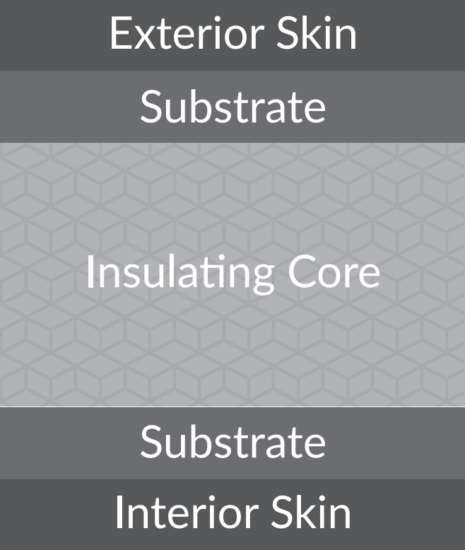
Five-layer polystyrene infill panels consist of an outer aluminum skin and an insulated polystyrene core covered with a stronger material like tempered hardboard, plastic, cement board or gypsum.
The layers of the infill panel give it strength, and the polystyrene at the core insulates the entire panel. Not all panels have polystyrene cores, but the material is one of the most popular in the industry.
Expanded Polystyrene Panels
Expanded polystyrene (EPS) panels are made from lightweight plastic foam — which is made from polymerized styrene monomers.
Steam is applied to cause the material to expand into “beads.” This material is then molded by compression and heat to form rigid sheets. EPS panels are available in various types and thicknesses, each designed for specific purposes.
Most builders use EPS panels because their performance is comparable to XPS panels, but the cost is lower. The only real difference in performance occurs when building below-grade.
High-quality manufacturers, like Mapes, can even custom-make EPS panels to fit the design’s aesthetic while also providing the insulation needed for large spandrel areas.
The Benefits Of Polystyrene-Core Infill Panels
Infill panels with a polystyrene core are the most popular choice for new commercial construction due to their cost-effectiveness, sustainability, energy efficiency and extreme weather resistance.
Cost Effectiveness
Polystyrene-core infill panels are builders’ first choice because they are the most cost-effective option. The panels themselves are priced well for the elevated aesthetics and increased thermal rating they provide. Buildings constructed with these infill panels also have a great insulation value.
The infill panels block sunlight and increase R values, which makes them good insulation in a glazing system. In a larger commercial space, having an infill panel in a glazing system results in significant energy savings.
When it comes to installation, these infill panels can further decrease builder costs. Because of their lightweight composition, polystyrene-core infill panels are easy to work with. They speed up installation and are easier to move to the job site — this can save on labor and transportation expenses.
Energy-Efficiency
Due to their insulating properties, polystyrene-core infill panels are highly energy-efficient. Polystyrene has low thermal conductivity, so heat transfer is minimized, and indoor temperatures are kept stable in all weather conditions.
Minimal Heat Transfer
Polystyrene is a thermal insulator that minimizes heat transfer through walls, floors and ceilings. The low thermal conductivity of these infill panels helps maintain consistent indoor temperatures without artificial heating or cooling.
This can reduce energy bills and greenhouse gas emissions and improve the comfort of a building’s occupants. Polystyrene’s insulation properties also stay stable for a long time, making the infill panels a wise long-term investment.
Moisture Resistance
Moisture resistance is crucial in construction, and polystyrene-core infill panels excel at this. Polystyrene’s closed-cell structure — where each cell is sealed off from its neighbors — stops water from infiltrating and contributes to its thermal insulation.
Preventing water absorption mitigates the risk of rot, mold and mildew, keeping indoor air quality healthy for occupants. Polystyrene’s moisture resistance also contributes to structural integrity and makes these panels suitable for exterior applications such as insulation for below-grade foundations.
Find Your Perfect Paneling Solution Today
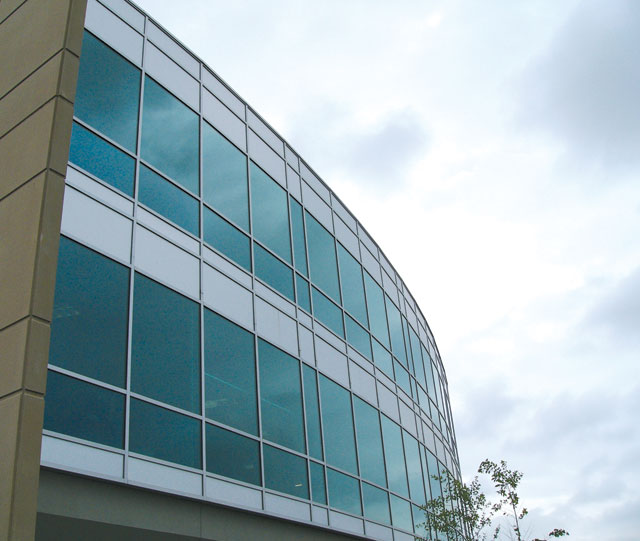
Mapes is proud to support the best architects and builders by offering innovative building products that transform the industry. For over 70 years, builders, architects and industry pros have chosen Mapes products.
Find our products near you or contact us directly for a custom quote or spec for your next project.
We’re the industry standard for architectural panels
From the day Mapes Industries opened its doors in 1952, we’ve been committed to being the best in the work we do and the way we do it. We’ve evolved over time, but one thing has never changed: our belief in treating every project like it’s the only one.
Learn why thousands of customers continue to choose a fourth-generation family business for architectural panels that stand the test of time. Our commitment to constant improvement is at the forefront of every project as we continually strive to be more innovative, helpful and efficient for our customers.
Thank You Mr. Marshall!

For many of our partners, Jay Marshall is synonymous with Mapes Panels. You seemingly can’t have one without the other.
It’s for that reason that it’s with both disappointment and pride to announce that after over 28 years, Jay retired from Mapes on January 1, 2021.
It’s hard to overstate the void his absence will leave. And while our team is up for any challenge, we all realize that it won’t be a small task to replace the grace, leadership, positivity, and knowledge that Jay provided us during his tenure.
Jay joined the Mapes Industries team in May 1992 as a Sales Representative, bringing us a wealth of industry knowledge from his previous employment with Kawneer. He was instrumental in the company’s growth over the next decade and became Sales Manager in 2001. During this time, Jay was directly involved in the development of many of our products and never wavered in his commitment to serving his customers.
He was named President of Mapes Panels in October of 2005 and served in that role for more than 10 years, a period of unprecedented growth for our company. During this time, Jay was instrumental in guiding us through a period of change where Mapes Industries was split into 2 divisions (Panels and Canopies). His guidance and expertise made the transition as seamless as possible, for our team as well as our partners.
Always up for a challenge, his commitment to the needs of our customers was Unrivaled. He rarely said “no” and consistently went the extra mile to find solutions to unique problems. His modus operandi was to treat a customer’s problem as if it were his. This approach became the centerpiece of Mapes culture and his example has become the template for how we approach relationships with our partners. His legacy at Mapes includes many tangible evolutions and improvements to our product and services, but it’s the intangible example he set for us that will be the most impactful going forward.
Be honest, be kind, and be present.
It sounds simple, but watching it in practice has been inspiring and those of us that remain here at Mapes are better people for having this example to emulate.
Jay…from all of us here at Mapes, thank you for your commitment to our success and shared goals. Your contributions will be felt here for years and years to come.
With the utmost gratitude,
Your Team at Mapes Panels and Mapes Canopies

